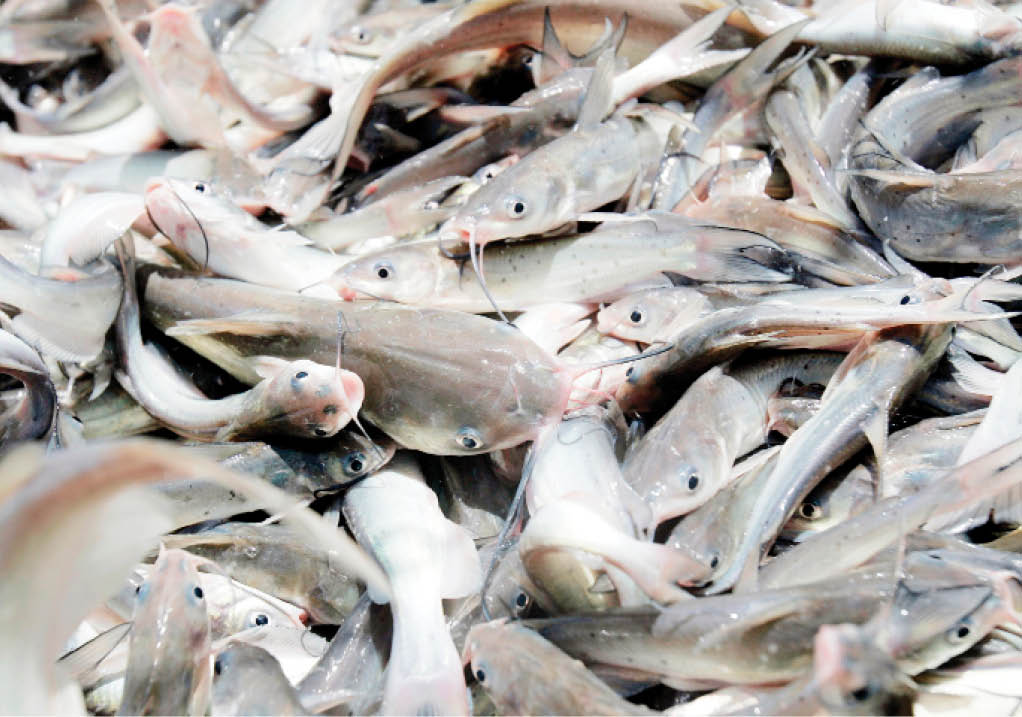Kwara catfish industry under threat over water crisis
Recently, the Kwara State Government raised the alarm over the activities of catfish farmers at the Asa Dam river, warning that it may truncate water supply to citizens in the state. The state government said the Asa Dam reservoir was not meant for fishing activities, adding that the development required a drastic measure to save […]

Water shortage is threatening fish farming in Kwara State
Recently, the Kwara State Government raised the alarm over the activities of catfish farmers at the Asa Dam river, warning that it may truncate water supply to citizens in the state.
The state government said the Asa Dam reservoir was not meant for fishing activities, adding that the development required a drastic measure to save the people of Ilorin metropolis from erratic water supply.
- FG’s N8.3bn NG-CARES intervention begins in Nasarawa
- TETFund to reinforce huge investments in 13 new varsities
Explaining further in a statement, the Commissioner for Water Resources, Wahab Femi Agbaje, noted that the dam reservoir “is solely for raw water impoundment.”
“The damage being done to the water infrastructure through the activities of fish farmers may soon truncate water supply to most parts of Ilorin metropolis if not curbed.
“Fishing activities and discharge of the effluent have been the order of the day over the past years.
“The effluent discharge has now reached a situation whereby our treatment plant could not cope with it anymore.
“This requires a drastic measure to save the populace of Ilorin metropolis and surrounding settlements from erratic supply of water,” the commissioner added.
However, government’s position did not go down well with the fish farmers who called for caution over its decision because of the effect it may have on the thriving catfish industry in the state.
According to them, any attempt to relocate them from the community will have a ripple effect on the fishing industry in the state.
The industry is gradually picking up from the issue of insecurity that recently plagued it, which saw some farmers abandoning their farms.
The state industry is a big player nationally, and ranks among the biggest in the country, with its value chain.
For this reason, many stakeholders have called for care and mutual understanding over the present situation.
Speaking on the issue, the Kwara State chairman of the Catfish Farmers Association, Sulyman Tunji Buhari, said catfish farming activities had been going on around the axis for a very long time. He said there was the need for caution because of the ripple effect its decision might have on catfish industry in the state and the country as a whole.
He said, “I think the government should be very critical about its decision because of the economic effect stopping the farmers might have on the state.
“I don’t think the activities of the farmers are causing havoc to the water, but there is a need to sit down and find a lasting solution to the issue.
“I think the solution should be how to properly channel the water, or how the inlet and outlet could be done in such a way that it will not cause much damage to the consumable water in the dam. But relocating us from there, to where?
But a senior staff in the Ministry of Water Resources who craved anonymity told Daily Trust on Sunday that the permanent solution to the issue was to have a waste treatment plant close to the farmers.
“The permanent solution to the issue is for us to have a waste treatment plant around the operating area so that every effluent that is being generated will be treated and no longer be going into the dam reservoir directly.
“The fish pond operators acquired the land locally from the indigenes, which provides them the opportunity to access the water from the dam and discharge into it free of charge. But that is not even the problem,” he said.
Explaining further he said, “The massive influx and heavy investment into the business after people saw how lucrative it was has taken us to another point.
“The bad water being discharged has high mineral content, and with the increase in the number of farmers, it is now telling on the quality of the raw water that we draw for treatment and distribution to the extent that the river is now rich enough to grow water hyacinth covering a very large area in the dam.
“The slugged load that the alum we use in water treatment is generating is now heavier and affecting the segmentation tank held by a fibre beam.
“This is now suppressing the original capacity the beams were designed for and they have begun to fail. This was the trigger for us before we discovered that the raw water quality has been uttered because of the effluent they are discharging into the dam.
“The simple solution is just for them to redirect their effluent not to get into the river again.
“The state had contacted a consultant on the issue, who proposed to build effluent treatment plant that will come at a cost.
“The other suggestion is for them to have a channel to collect their effluent. This is also the major issue of their encroachment on the 250m setback from the dam, which is a World Health Organisation (WHO) standard. But some of their farms are just 20 to 30 meters away from the dam.
“There is also the need for them to register under the Ministry of Agriculture,” he said.
He, however, added that moving them away from there would be very difficult as it is an already established business.
